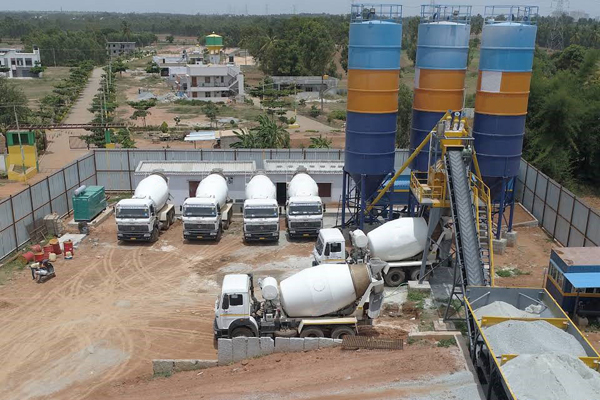The Marvel of Modern Construction: The Concrete Mixer
In the world of construction, the concrete mixer stands as an unsung hero, tirelessly blending together the key ingredient in virtually every building and infrastructure project: concrete. This unassuming machine, often overlooked by the untrained eye, plays a pivotal role in shaping our urban landscapes. In this article, we will explore the fascinating world of concrete mixers, their types, functionality, and the profound impact they have had on the construction industry.
The Birth of Concrete Mixing
The use of concrete dates back to ancient times, with various civilizations employing rudimentary mixing techniques. However, it wasn’t until the 20th century that the concrete mixer, as we know it today, came into existence. The first mechanical mixer was invented in 1905 by Stephen Stepanian, who sought to mechanize the labor-intensive process of hand-mixing concrete.
Types of Concrete Mixers
Concrete mixers come in various shapes and sizes, each designed for specific applications and project requirements. The most common types include:
Drum Mixers: These are the quintessential concrete mixers seen at construction sites. They have a rotating drum that mixes the concrete ingredients. Drum mixers can be further categorized into tilting and non-tilting models.
Twin-Shaft Mixers: These high-capacity mixers are used for large-scale projects, producing a consistent and homogeneous mix due to the dual, counter-rotating shafts.
Planetary Mixers: Similar to twin-shaft mixers, planetary mixers offer a unique mixing action, ensuring thorough blending of materials.
Reversing Drum Mixers: These mixers have a two-part drum that can rotate in both directions, providing efficient and uniform mixing.
Volumetric Mixers: Volumetric mixers are versatile, as they allow on-site mixing of concrete in precise quantities, reducing waste and improving cost efficiency.
Functionality and Operation
Concrete mixers are relatively simple machines, yet they perform a crucial task with remarkable efficiency. Here’s a basic overview of how they operate:
Loading: The essential ingredients for concrete—cement, aggregates (sand and gravel), water, and sometimes additives—are loaded into the mixer.
Mixing: The mixer’s drum or blades begin to rotate, ensuring that all the components are thoroughly mixed. The rotation speed and duration vary depending on the type of mixer and the desired concrete consistency.
Discharge: Once the mixing process is complete, the mixer is tilted or the drum is reversed to release the concrete, which is then transported to the construction site.
Impact on Construction
The advent of concrete mixers has revolutionized the construction industry. Their benefits are numerous and far-reaching:
Efficiency: Concrete mixers significantly reduce labor and time requirements, enabling construction projects to progress at a much faster pace.
Consistency: The mechanical mixing process ensures that the concrete is of uniform quality, enhancing structural integrity and longevity.
Cost Savings: Efficient mixing minimizes waste, saving money on materials and reducing the environmental impact.
Versatility: Various types of mixers cater to different project sizes and requirements, making them adaptable to a wide range of construction tasks.
Safety: Reduced manual labor lowers the risk of injury to construction workers, promoting workplace safety.
Conclusion
The humble concrete mixer may not always steal the spotlight, but it is undeniably the backbone of the modern construction industry. Its evolution from rudimentary mixing methods to highly efficient, specialized machines has paved the way for larger, more complex, and faster construction projects worldwide. As technology continues to advance, we can expect even more innovations in concrete mixing, further shaping the future of construction.


Post A Comment